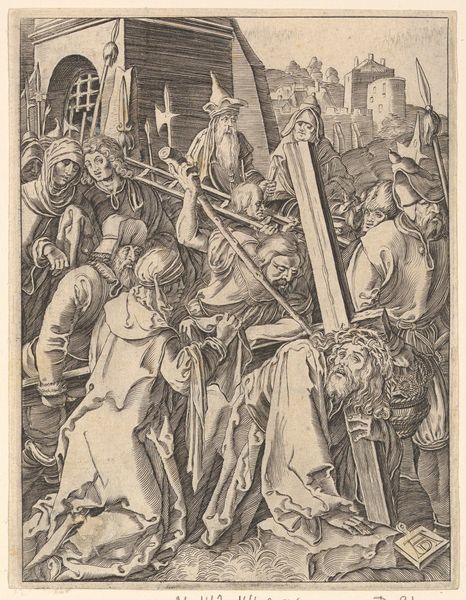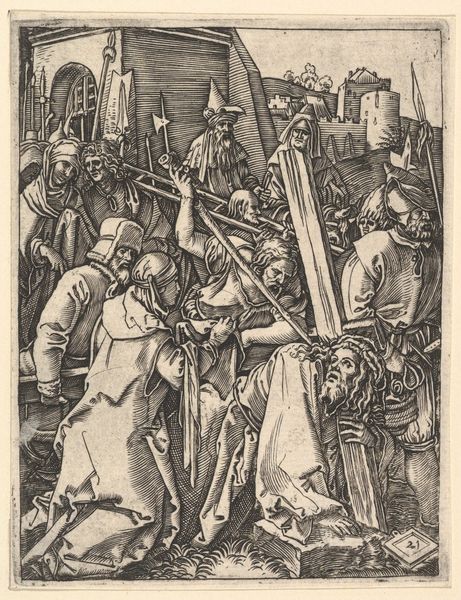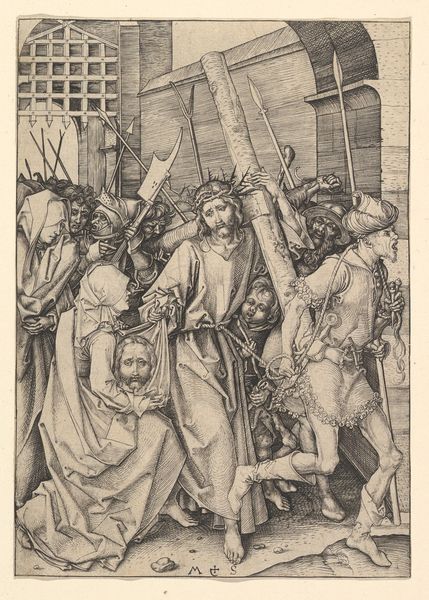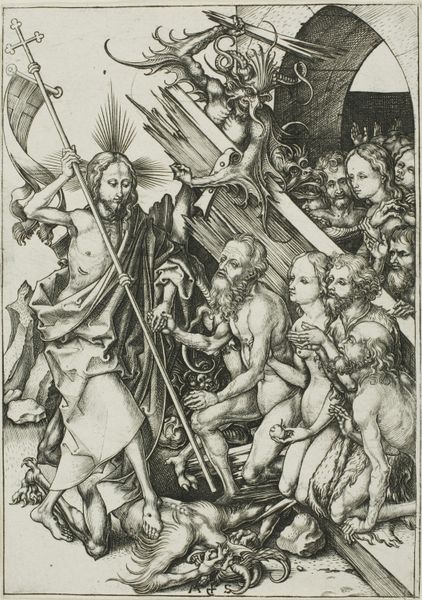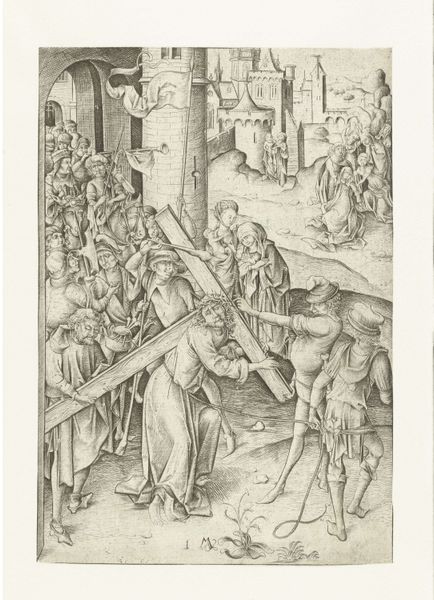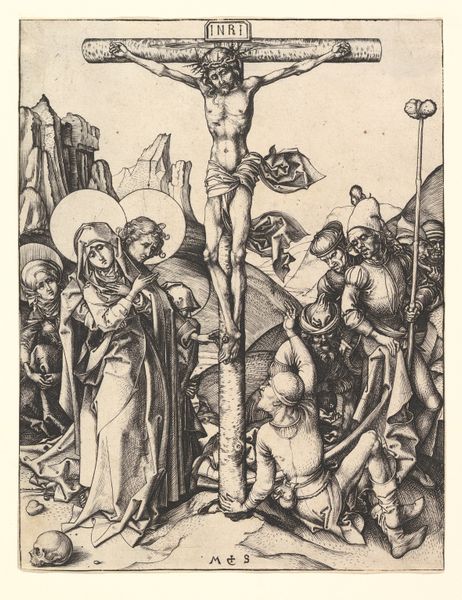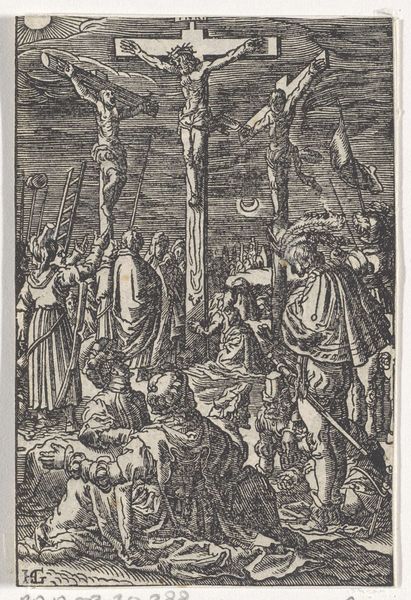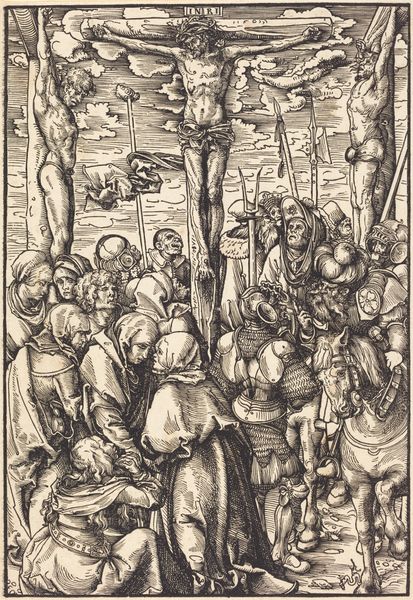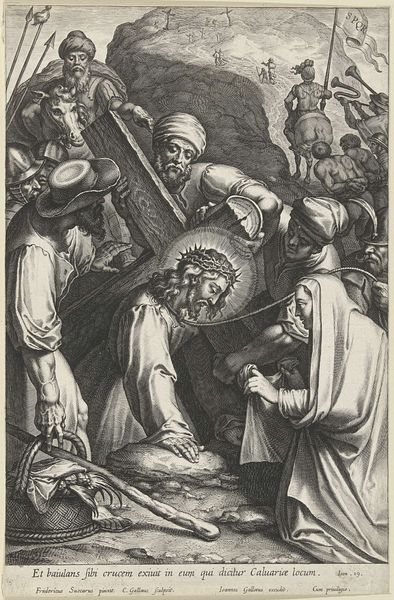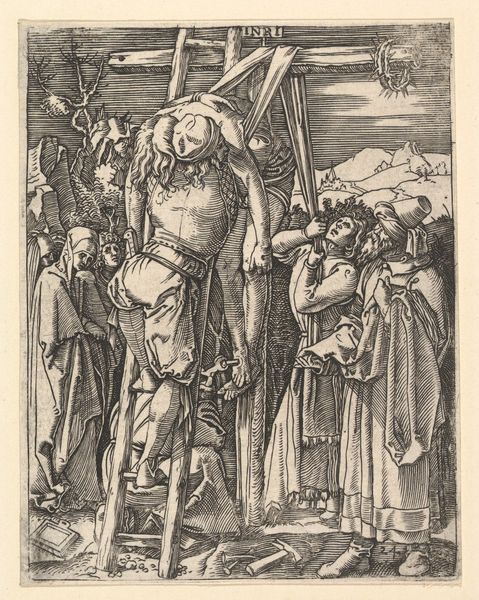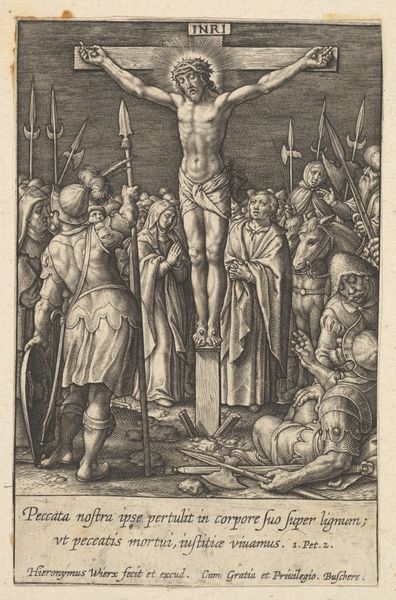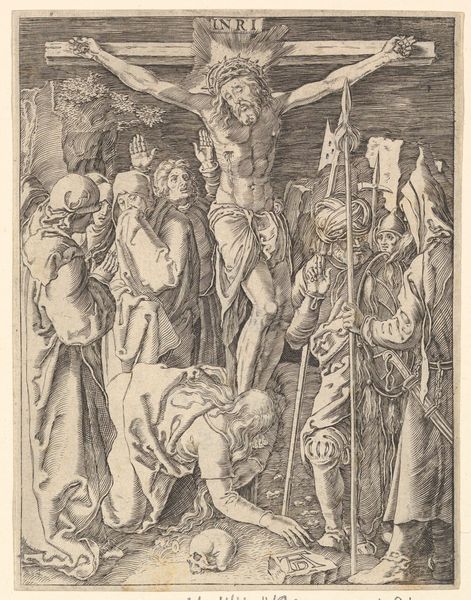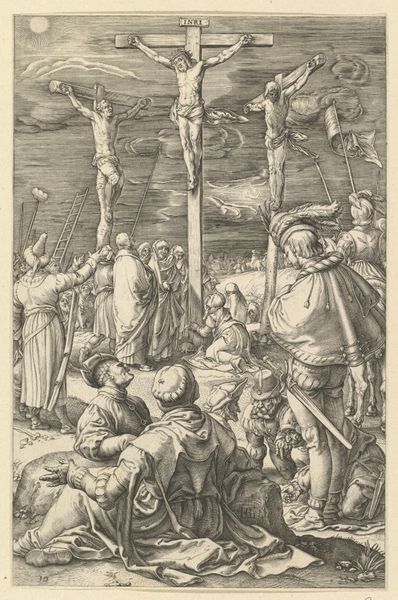
Dimensions: Sheet: 4 5/8 in. × 3 in. (11.8 × 7.6 cm)
Copyright: Public Domain
Curator: This is “Christ Carrying the Cross,” an engraving by Albrecht Durer, created in 1512. It is part of his series called “The Passion” and it’s currently housed here at the Metropolitan Museum of Art. Editor: My immediate reaction is the sheer intensity Durer manages to pack into such a small space. It feels claustrophobic, almost oppressive. You're surrounded by figures, and yet, profoundly alone. Curator: Precisely. Durer uses the symbolism of the Passion to make broader social and spiritual points. Notice how the Roman soldiers, with their halberds, represent earthly authority and its brutal application. Editor: It's not just authority, but the mob, isn’t it? The way the figures press in from all sides really gives you the feeling of societal pressure bearing down on one individual. Were these prints circulated widely during that period? Curator: They were indeed. Prints like this were relatively accessible, allowing Durer's vision of the Passion to reach a wide audience, influencing religious thought and piety across Europe. He essentially democratized religious imagery. Editor: It is fascinating how Durer employs the established religious themes as tools to spark conversation. Christ’s suffering takes on another layer when he sets it amidst very detailed, recognizable figures. Curator: Right. And consider the tradition that grounds it. Carrying the cross becomes a metaphor for suffering, yes, but it’s also the central drama in salvation history. The Passion becomes deeply ingrained in Western consciousness precisely because of powerful images like this. Editor: It makes you wonder about the artist's intent. Was it purely devotional, or was there a political dimension? The details are incredible; you can practically feel the weight of the cross and see the exhaustion in Christ's face. Curator: Durer was a master of conveying emotional depth through minute detail, reflecting his cultural context of a period of religious introspection that was increasingly affected by social turmoil. I read the picture, ultimately, as speaking to timeless themes. Editor: Timeless indeed. Gazing upon this engraving after all these centuries and absorbing its emotional and visual resonance is very moving. Thank you for that overview. Curator: My pleasure. It's these enduring images that keep the narratives alive in our collective memory.
Comments
No comments
Be the first to comment and join the conversation on the ultimate creative platform.
